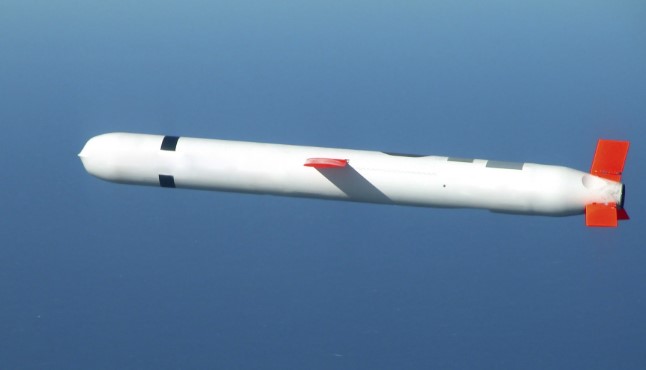Recent developments suggest a shift in U.S. policy toward supplying Ukraine with advanced weaponry. Security experts indicate that President Donald Trump may demonstrate greater resolve in helping Ukraine end the ongoing conflict compared to previous U.S. leadership. One of the key aspects of this potential change is the consideration of providing Ukraine with BGM-109 Tomahawk Land Attack Missiles, a weapon system long requested by Kyiv.
Trump Signals Potential Change in Ukraine Tomahawk Missile Support
While no official steps have yet been taken to deliver Tomahawks, discussions between U.S. and Ukrainian officials are reportedly ongoing. Experts note that if supplied, the missiles could come with fewer restrictions on their use than those applied during the previous administration.
Historically, the United States has been cautious in providing such high-capability weaponry, citing risks of escalation or misuse. However, recent analyses highlight that Ukraine has effectively carried out operations on Russian energy infrastructure without causing uncontrollable escalation, demonstrating a level of strategic discipline.
Putin warns US over Tomahawk missile supply to Ukraine citing risks to relations and battlefield
The potential supply of Tomahawk missiles represents a major shift. These long-range missiles could significantly expand Ukraine’s strike capabilities, allowing it to target sites deeper inside Russian territory. Observers note that even the possibility of having such weapons could create a strategic dilemma for Russia, increasing pressure on its leadership to engage in negotiations.
Strategic Implications of Tomahawk Missiles
Tomahawk missiles provide precision and long-range capabilities. While Ukraine has previously used drones and shorter-range missiles, the Tomahawk could extend its operational reach up to 2,500 kilometers, depending on the variant. This range far exceeds that of the ATACMS missiles fired from HIMARS systems, which reach up to 500 kilometers.
Delivering Tomahawks to Ukraine would mark a new stage in the conflict. Unlike drones, which effectively cause fires at specific targets, Tomahawks can strike a broader array of facilities, including drone production plants and other strategic infrastructure. Submarines or surface vessels typically launch the missiles, but with the introduction of land-based systems like the Typhon, Ukraine could potentially operate them from its own territory.
Across party lines: Americans unite to arm Ukraine and tighten sanctions on Russia
Experts emphasize that the timing of such a supply is significant. Had these missiles been provided earlier, Ukraine might have been able to carry out longer-range strikes sooner, potentially creating greater pressure on opposing forces. Despite the potential risks of advanced weapons falling into enemy hands, analysts agree that Ukraine’s consistent and controlled use of its current arsenal makes it a viable candidate for receiving Tomahawks.
Current Diplomacy and Weapon Supply Discussions
Diplomatic discussions appear to be proceeding quietly. Although there have been no major public announcements about the delivery of Tomahawks, interactions between U.S. and Ukrainian leaders suggest the topic remains under consideration. Analysts indicate that any decision is likely to balance the benefits of enhancing Ukraine’s defense capabilities with the risks of escalation or unintended consequences.
A key factor in these deliberations is the approach to restrictions on missile use. Previous U.S. administrations applied detailed limitations to prevent escalation, while current assessments suggest officials might consider fewer restrictions. This approach could give Ukraine greater operational flexibility and signal a stronger commitment from the United States to support Kyiv in the conflict.
The discussion over Tomahawks also reflects broader strategic calculations. By showing that Ukraine can strike deeper into Russian territory, it could alter the strategic balance and create additional pressures that influence negotiations. Even the potential to strike major facilities, including Moscow, serves as a form of strategic leverage rather than an immediate operational plan.
Japan’s giant warship heads to US for deadly Tomahawk missile upgrade
Meanwhile, production and availability factors also influence decisions. The United States has historically produced Tomahawks in limited quantities, though officials expect to increase output to meet new demands. Observers note that supplying advanced missiles like Tomahawks involves not only tactical considerations but also long-term inventory management and balancing U.S. military priorities in other regions.
Ongoing discussions around Tomahawk missile supply highlight both the evolving U.S. approach to the conflict and the strategic opportunities presented by advanced long-range weaponry. While officials have not made any official deliveries, the possibility marks a notable change in the level of support for Kyiv and demonstrates the complex interplay between diplomacy, military capability, and strategic calculations in the region.

